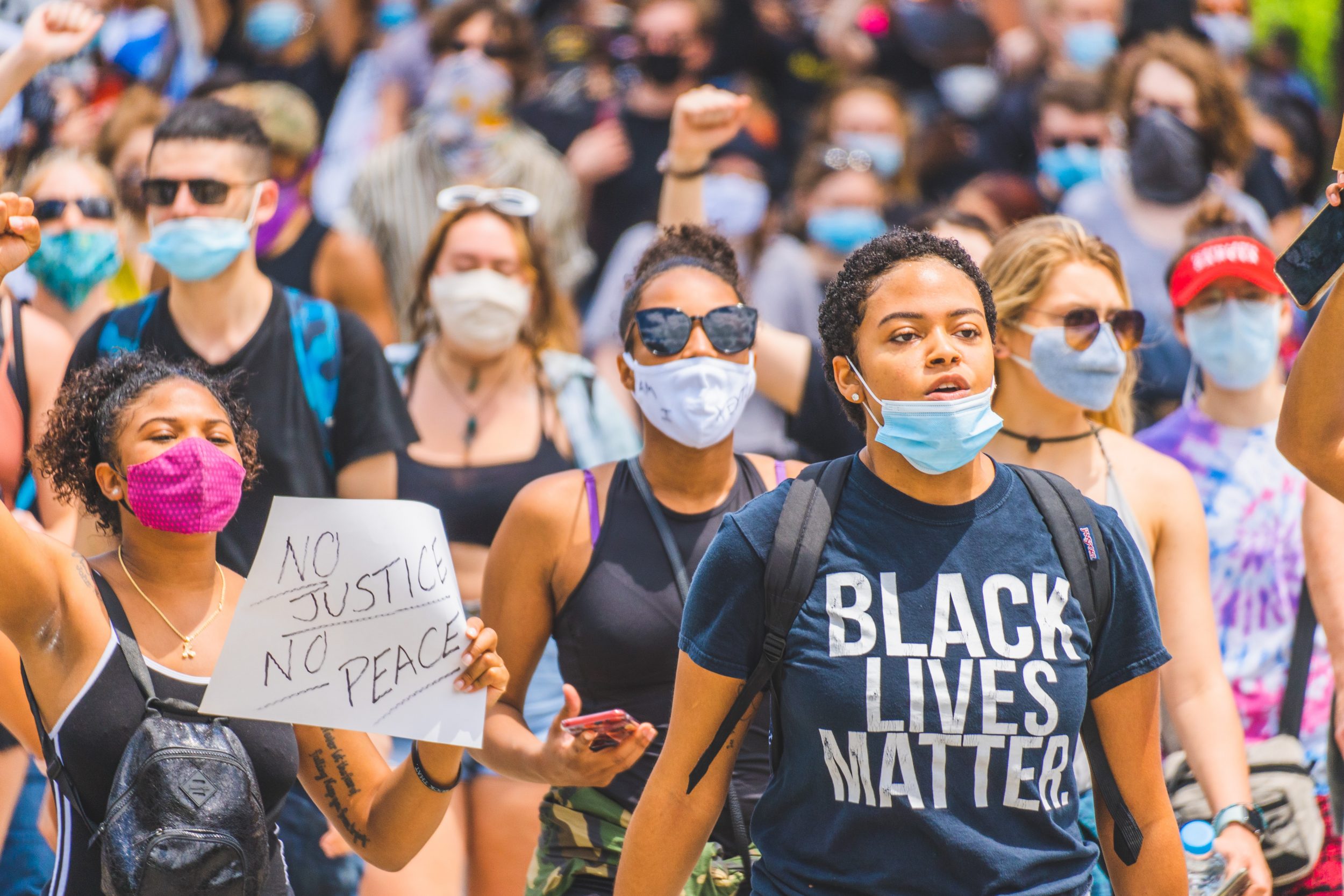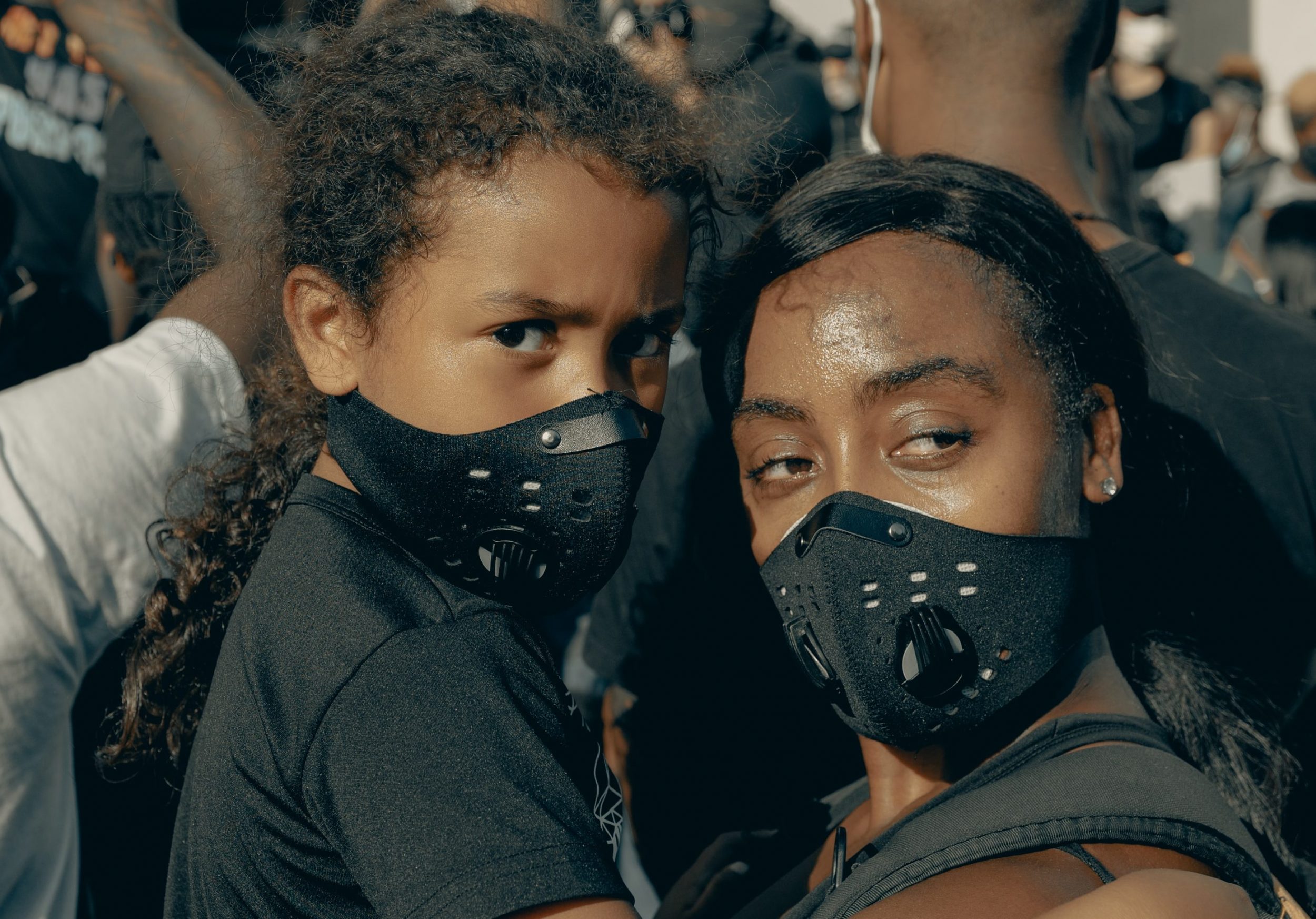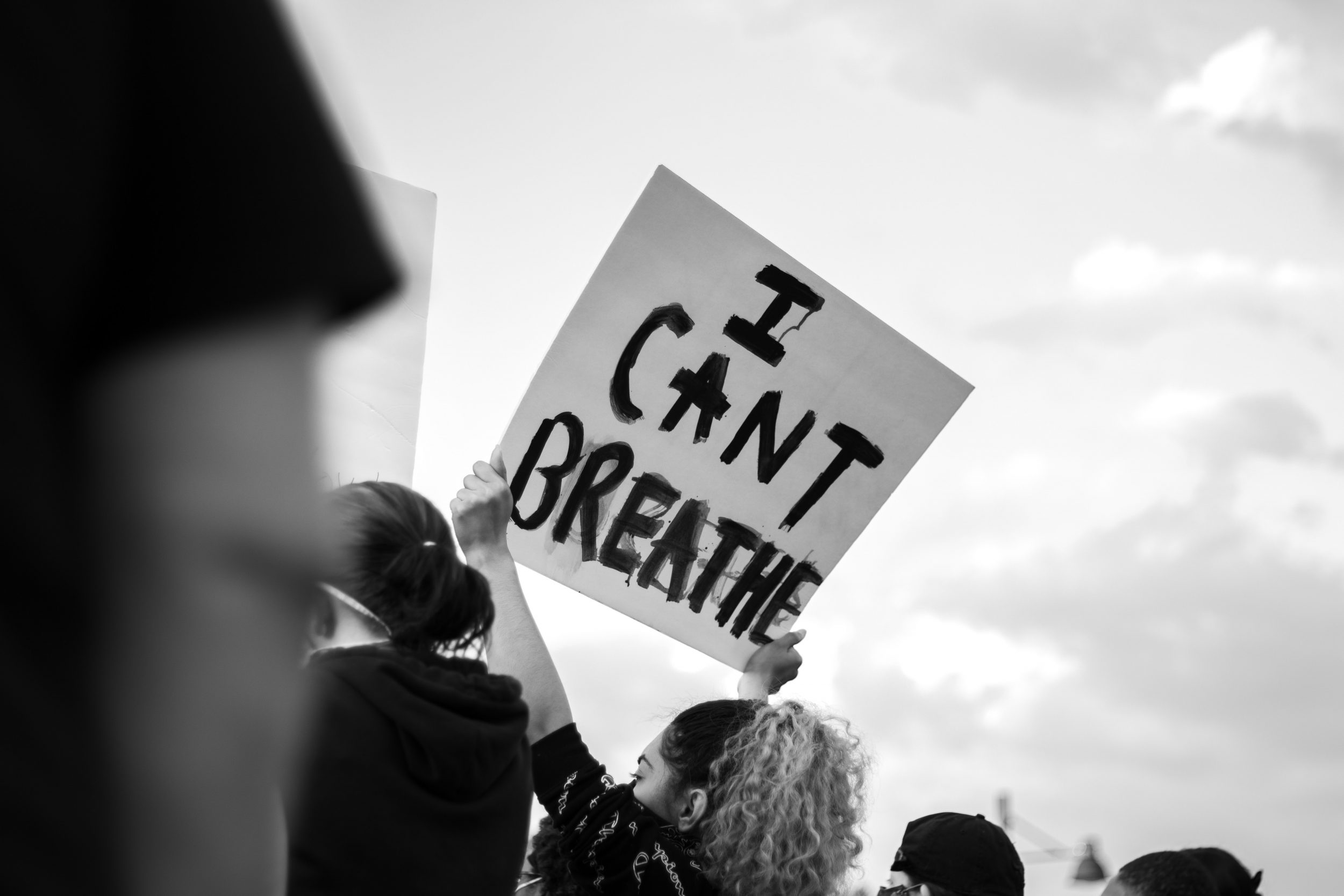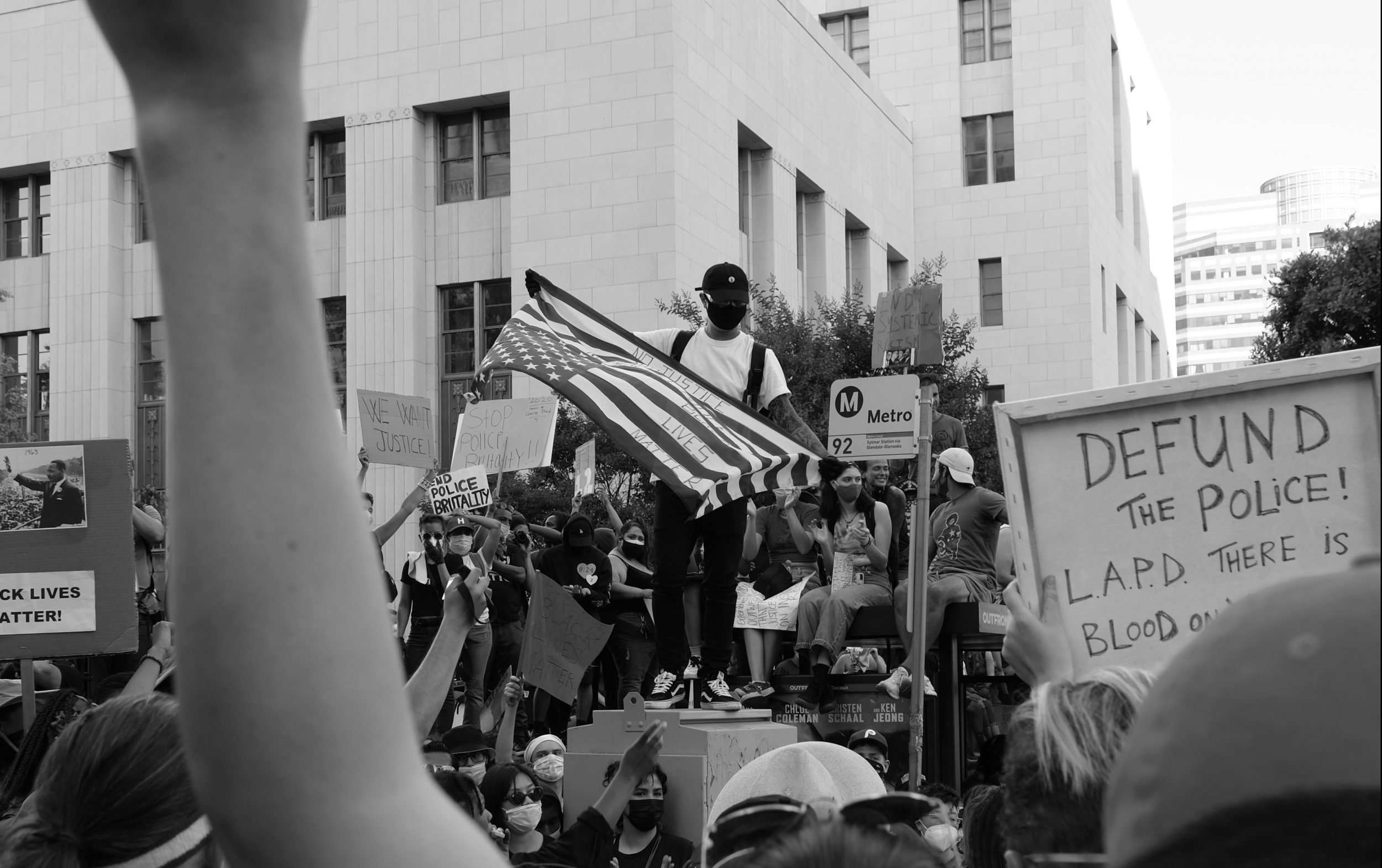 As Ofcom reports that internet use has surged to record levels in the UK, Pam Ramsden, Lecturer in Psychology at the University of Bradford, looks at the links between the pandemic, social media and protests.
As Ofcom reports that internet use has surged to record levels in the UK, Pam Ramsden, Lecturer in Psychology at the University of Bradford, looks at the links between the pandemic, social media and protests.
The image of a police officer kneeling on the neck of a George Floyd while he is in police custody, handcuffed and saying he cannot breath will be forever be burned into our memory. In the last few weeks, many of us have been following the protests sparked by his killing through social media and online news publications.
George Floyd is not the first black man to be killed by police brutality. Before him, there were many black people lost and civil rights activists had been calling for change well before this moment. However, what makes it different now is the sheer size of the response.
Across the world, from New York to Cape Town, large crowds of people of all ages and backgrounds have taken to the streets to protest the injustice of Floyd’s killing and to draw attention to the systems of racism that exist in their countries. The first protest began the day after Floyd was killed on May 26 and they are still going.
The coronavirus and how we have been consuming social media has a lot to do with the psychology of why so many have and continue to be mobilised.
From pandemic to protest
In lockdown, our intake of negative news has increased with the number of reports of health services running out of supplies, the increasing number of deaths, and the basic disruption in daily living as we have been forced to lead socially distant lives and our connections with friends and family have come to a standstill. As a result, constant mind-numbing scrolling and almost compulsive consumption of negative media have acquired a new term: doomscrolling.
Through social media and news outlets, we have been subjected to the devastation of the coronavirus. We are seeing people in overwhelming circumstances, grieving families; doctors and nurses working without the PPE; and people dying in hospitals alone and without family contact. COVID-19 has created a fear of the unknown. Wear masks, don’t wear masks; the issues with PPE and testing; misinformation on social media about the virus; but most harrowing is the number of people who have been dying every day.
A growing body of research, pre-COVID, indicated links between depression and anxiety and social media use. Additional research suggests that people who lurk without active participation are also more likely to experience stress, depression and anxiety than those who actively get involved in conversations – though it may be that those prone to depression and anxiety are more prone to silent participation.
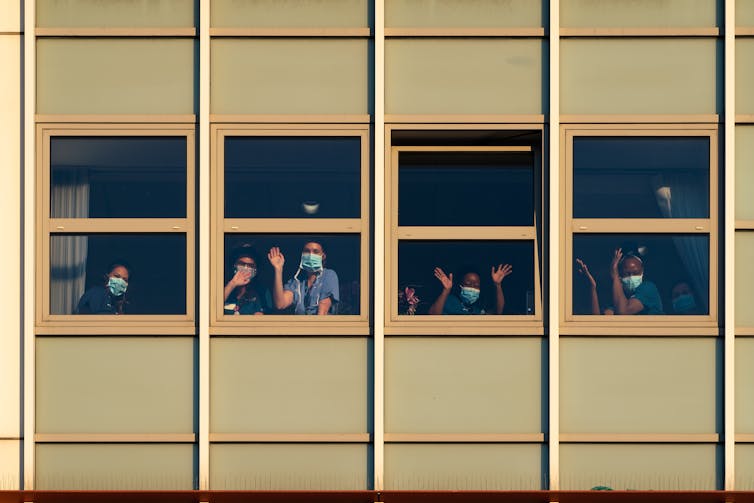
Guy RD/Shutterstock
Constantly taking in all this information, with its focus on death and the looming threat of the virus has, for many, triggered a psychological concept called terror management theory. This theory states that we have many defence mechanisms such as a just worldview, nationalism, and religious beliefs that help alleviate our fear and protects us from existential anxiety when something threatens our mortality. If these defence mechanisms fail and we feel exposed and threatened we attempt to connect to a broader social entity, a collective or to pursue something with meaning.
Floyd’s death combined with a history of systemic racism and police brutality towards people of colour has created the current collective. A collective that provides members with meaning and purpose. As a result, the fear of COVID-19 has been minimised because of the focus on mass gatherings and belonging-ness. It is this desire for a collective that is helping to advance the rise in protests and the mobilisation of people who previously might not have joined in.
Finding meaning
People no longer want to define themselves as anxious and alarmed individuals in lockdown but people with a sense of meaning and purpose. As more join the ongoing protests they are reaching for something that psychologists call mortality salience – a need to experience a sense of clarity about worldviews, values and purpose in society.
As we have seen, many protesters reject any perspectives that oppose their own opinions and in turn support anyone who shares the same value system. In this case, they shout down anyone who rejects that police brutality is systemic or states that the current situation is a result of only a “few bad apples”.
And the protesters support political leaders, such as Republican senator and former presidential candidate Mitt Romney in the US, that demand change and social justice.
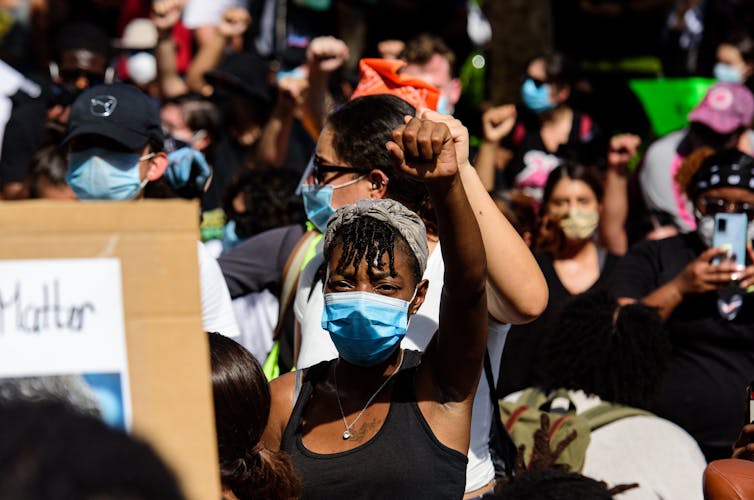
Tverdokhlib/Shutterstock
The protests have spread across the world offering many people the opportunity to become involved with an important movement and community. However, as the protests increase so does the possibility of doomscrolling. Social media is now proliferated with different violent visual images of police tear-gassing peaceful protesters and further attacks on them. This makes even more people sensitive to police brutality and procedural injustice and further feeds into the collective.
Even with the ever-looming fear of a second wave of coronavirus, protesters are invested in the collective and see the protests as worth the risk. Sentiments that have also been shared by healthcare professionals who have joined the cause in support.
People want to believe that they can contribute to some purpose that goes beyond the pandemic. The protests appear to provide people with a sense that life is meaningful and that they can bring about change together. Life does not have to be defined by a pandemic where social distancing, washing our hands and staying safe are our only options. We can join a collective with a cause against racism, social injustice and police brutality, whether that is through protest or other mechanisms of support. From fear in this current time, many people have found meaning.![]()
This article is republished from The Conversation under a Creative Commons license. Read the original article. This article represents the views of the author, and not the position of the Media@LSE blog, nor of the London School of Economics and Political Science.
Featured image: Featured image: Photo by Julian Wan on Unsplash


